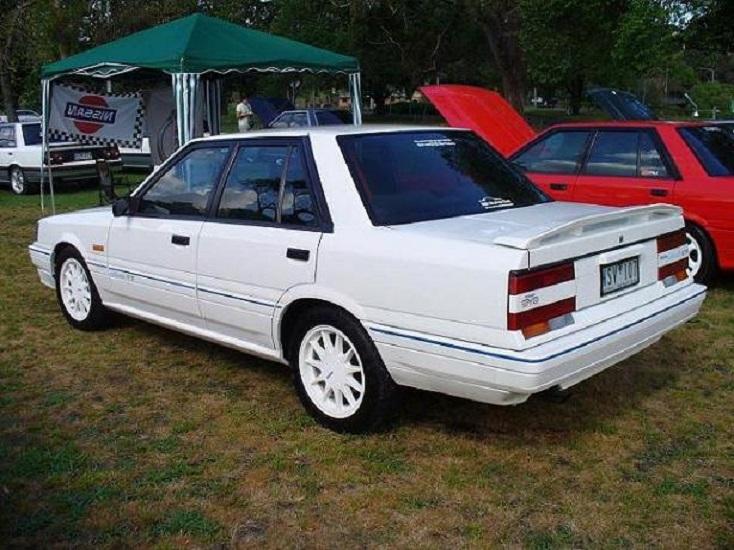1988 Nissan Skyline R31 Silhouette GTS1 (SVD)
Specifications
Vehicle location
Australia , VIC , South east Melbourne
Unfortunately, we don't have all the details for car 107, and this is the pnly photpograph we have of the car when it was for sale in Melbourne around 2006, asking $8,900 at the time. If anyone has any further details of images of this particular car (including the chassis and engine number details), please contact us so we can update the profile.
At the time of advertisement, the seller made the following comments about the car: The car has had a $7,000 rust repair and respray - completed in October 2005. The brand new genuine Nissan parts installed are: New bootlid and bonnet, front and rear bars and reo's, radiator, front disc rotors, brake and clutch master cylinder, clutch (daiken), water pump, heater core, power steering pump, alternator, battery, starter motor, headlights, fog lights, tail lights, indicators, front and side, uni joints, centre bearing, AAC valve, genuine rear muffler, (last one in existence), brand new rear bilsteins and rebuilt fronts, all new bushes throughout. Non genuine parts are Windscreen, momo wheel recovered, exhaust worx exhaust with hi flow cat, (Fitted when genuine rear muffler fitted).
There are many more genuine and non genuine parts that have been replaced on this car. The car needs very little to finish it. The seller states that they had put more than $20,000 AUD into the car, and that it would be featuring in an issue of Unique Cars Magazine. Has all owners manuals, including SVD wallet, and everything still in it that it was built with, including a working SVD stereo.
For those that don't know these cars, this is an Australian special edition Nissan Skyline R31, known as the GTS1 Silhouette. All the GTS1 cars were painted white. Some of the visually distinguishing features of the car included 16" white powder coated 11 spoke wheels, rear spoiler, unique SVD / Silhouette decals and sports cloth interior - along with the unique badging. The cars were fitted with a turbocharged RB30 engine and stage 1 camshaft, producing 130kw, and were only available in manual transmission. Extractors, and 2.25" exhaust and an LSD were also fitted standard.
If you own one, please add yours to Classic Register so we can keep records on the remaining cars. If you are now the owner of this car or know where it ended up, please get in contact with us and we can update the cars profile.
You are about to contact the author of this vehicle.
Be aware this vehicle has currently not been listed for sale!
So refrain from price bidding.
